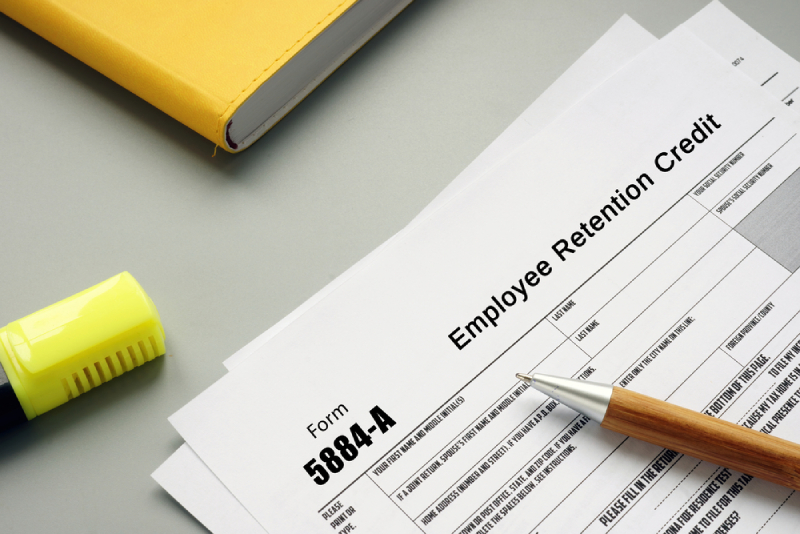There is a LOT of smoke emanating from Congress right now. As usual, with Congress, there are always rumors and mutterings — what matters is what is actually signed into law.
And we’ll keep you up to date on what you might need to know.
But speaking of Congressional acts that have been signed into law …
Wouldn’t it be great to get money for just having kept your Richardson employees afloat during the last rough-as-nails year or so?
Well guess what? Maybe you can.
Trouble is, Congress may soon take this deal away. Or it may not. Here’s the latest word on that and how you can still cash in – for now.
Is The Employee Retention Tax Credit Right For Your Richardson Business?
“Somewhere, something incredible is waiting to be known.” – Carl Sagan
Late last year the Taxpayer Certainty and Disaster Tax Relief Act of 2020, following up on earlier relief laws, allowed the good folks at the IRS to give Richardson employers like you a real tax break.
The Employee Retention Tax Credit (ERC) is a refundable tax credit – sort of a thank you from Uncle Sam – on the employer share of Social Security taxes that your business pays if you’ve been hit by the pandemic but kept your employees on payroll instead of laying them off.
Here’s how it works: If your Richardson business qualified, you could whack a chunk off what you paid in tax equal to, for this year, 70% of most wages you paid to employees through June 30. This applies to wages and compensation, in general, that are subject to Federal Insurance Contributions Act (FICA) taxes.
How do you qualify? Two ways, primarily: You got dinged in the down economy or the government “closed you down” during a particular quarter because of the pandemic.
Under the newest rules, if your business took at least a 20% hit for a quarter in 2021 compared to the same quarter in 2019, you are eligible. ERC regs for 2020 required a 50% decline over the same quarter in 2019 (or a government shutdown). A company can now have up to 500 full-time employees and qualify, up from 100 under old ERC regs.
(Bigger companies can also qualify, but the wage restrictions are a little tighter.)
The newer rules added ERC eligibility for the second half of this year for more businesses like public universities, hospitals and medical-care providers, “recovery startup businesses” that opened their doors after Feb. 15, 2020, and for all wages including for work and for paid time off.
You can only get seven grand per employee per quarter max in 2021 but still, who couldn’t use this kind of cash? Where do you sign up?
Not so fast – enter Congress
Even as we speak, the House of Representatives is batting around the Bipartisan Infrastructure Investment and Jobs Act. It passed the Senate recently and the House is tweaking its own version. What’s that got to do with your tax break for keeping people on the job?
A lot, as it turns out. Capitol Hill is thinking of killing the ERC for the last quarter of this year. Even if they don’t, they might tweak it so your Richardson business can’t qualify. Stay tuned – this could change or all be settled any hour. We’ll keep you up to date.
Back to the future
When the future’s uncertain, reach for the past: You can basically go back in time to apply for the Employee Retention Tax Credit .
For instance, one of the beefs with the ERC in 2020 was that you couldn’t claim the credit if you’d received a Paycheck Protection Plan loan. Late last year, though, the federal Consolidated Appropriations Act changed all that: Suddenly you could retroactively claim the ERC for payroll periods that were not paid with PPP loan money. No double-dipping, as it were.
What’s it matter if Congress kills the ERC for the rest of this year? That’s when “retroactively” becomes a big word – you can amend past returns.
To review: To qualify for the ERC, you had to have gross receipts fall significantly in a quarter of 2020 or 2021 compared with the same quarter in 2019, have operations unusually impacted by government order from the health emergency or you began business operations after mid-February 2020.
Fit any of those? Then no matter what the House does in the coming days/hours/minutes, we can help you retroactively file using IRS Form 941-X (sounds like a spaceship but let us worry about that…) and possibly cash in with an ERC.
Yeah, you have to keep a lot straight to claim this tax credit – it would be no wonder if you’re confused.
But if you think you fit those circumstances in any way, if you want to review your 2020 or 2021 quarterly payroll tax returns, or you know another business owner who could benefit, let’s chat.
To your bottom line… and to using the tax code to your advantage,
Teresa Bilsky
469-Tax-Help
BFG Tax Help

